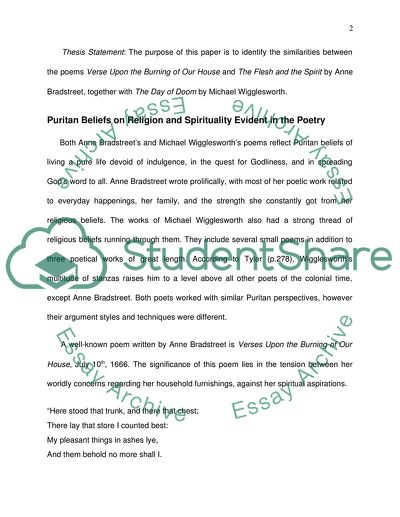Cite this document
(Anne Bradstreet and Michael Wigglesworth Research Paper, n.d.)
Anne Bradstreet and Michael Wigglesworth Research Paper. Retrieved from https://studentshare.org/literature/1746983-research-paper-on-anne-bradstreetverse-upon-the-burning-of-our-house-michael-wigglesworththe-day-of-doom-anne-bradstreetthe-flesh-and-the-spirit
Anne Bradstreet and Michael Wigglesworth Research Paper. Retrieved from https://studentshare.org/literature/1746983-research-paper-on-anne-bradstreetverse-upon-the-burning-of-our-house-michael-wigglesworththe-day-of-doom-anne-bradstreetthe-flesh-and-the-spirit
(Anne Bradstreet and Michael Wigglesworth Research Paper)
Anne Bradstreet and Michael Wigglesworth Research Paper. https://studentshare.org/literature/1746983-research-paper-on-anne-bradstreetverse-upon-the-burning-of-our-house-michael-wigglesworththe-day-of-doom-anne-bradstreetthe-flesh-and-the-spirit.
Anne Bradstreet and Michael Wigglesworth Research Paper. https://studentshare.org/literature/1746983-research-paper-on-anne-bradstreetverse-upon-the-burning-of-our-house-michael-wigglesworththe-day-of-doom-anne-bradstreetthe-flesh-and-the-spirit.
“Anne Bradstreet and Michael Wigglesworth Research Paper”, n.d. https://studentshare.org/literature/1746983-research-paper-on-anne-bradstreetverse-upon-the-burning-of-our-house-michael-wigglesworththe-day-of-doom-anne-bradstreetthe-flesh-and-the-spirit.


